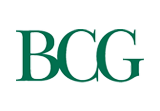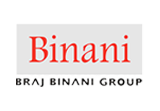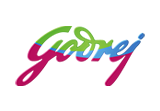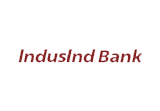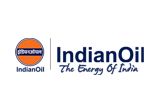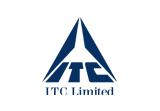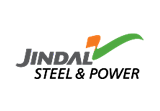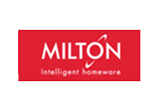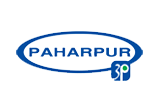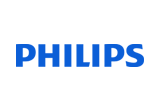Indonesia Export Data
29-Sep-2025
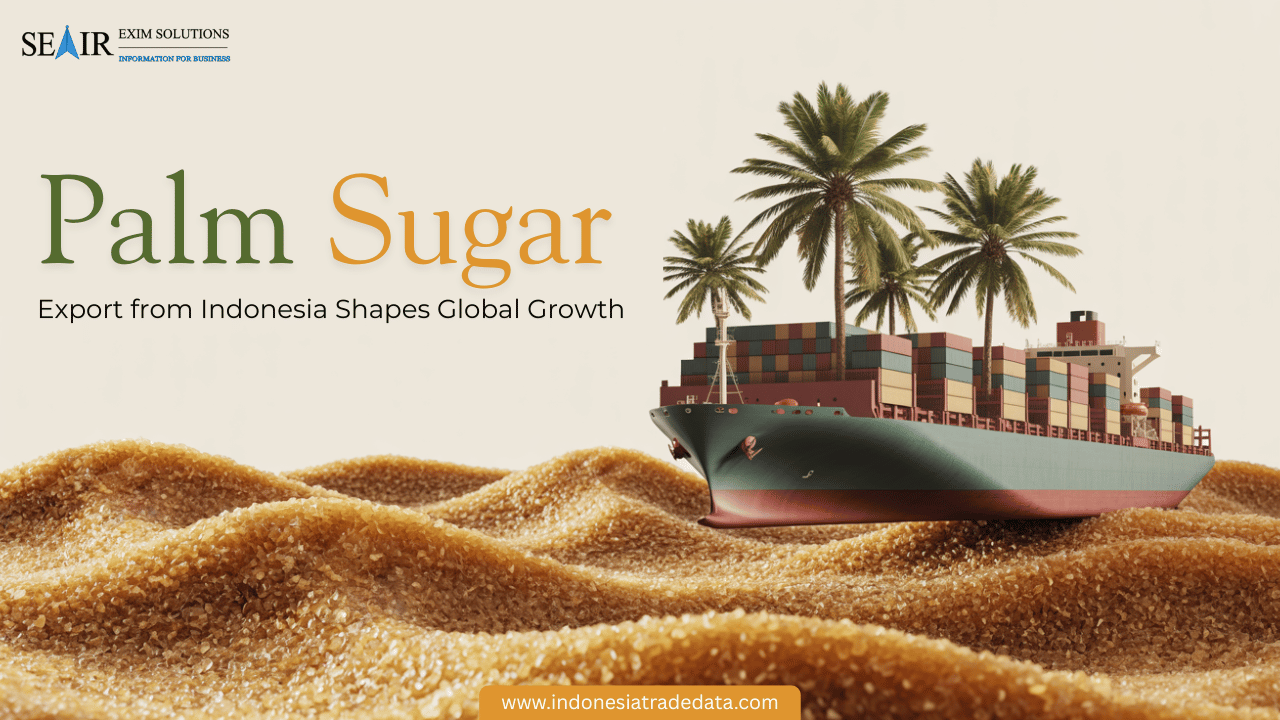
Palm sugar is exported in three main forms: solid blocks, liquid syrup, and granulated powder.
As per Gula Aren export data from Indonesia, shipments of gula aren (palm sugar) increased by 74% between October 2023 and September 2024.
The top gula aren importing countries are the United States, Malaysia, Bangladesh, Australia, Singapore, and the United Arab Emirates.
The major gula aren exporting countries are Brazil, Thailand, India, Germany, China, and France.
Indonesia, renowned for its rich agricultural heritage, has emerged as one of the leading exporters of palm sugar, a natural sweetener gaining global recognition for its health benefits and sustainable production. With its low glycemic index, distinct caramel-like flavor, and eco-friendly cultivation, Indonesian palm sugar is in high demand across international markets, particularly in the food, beverage, and wellness industries.
As consumers worldwide shift toward healthier and more organic alternatives, Indonesia’s palm sugar export industry not only boosts the nation’s economy but also strengthens its position as a key player in shaping global growth in the natural sweeteners market. In this blog, we will explore the insights on Gula aren export from Indonesia, Gula aren exporters list, Gula aren importers list, Indonesia export data, the HS code for Gula aren, and how to export Gula aren from Indonesia.
Known locally as "gula aren," palm sugar is a natural sweetener made from the sap of the Arenga pinnata palm tree, which grows well throughout Southeast Asia, particularly in Indonesia. Highly valued for its deep, earthy aroma and rich, caramel-like flavor, this traditional sugar gives a distinctive flavor profile to a variety of foods and drinks, from traditional recipes to contemporary culinary creations.
Unlike refined white sugar or high-fructose corn syrup, palm sugar is made through a simple, chemical-free process, preserving its natural nutrients and purity. It is available in multiple forms, such as solid blocks, granules, or liquid syrup, offering versatility for cooking, baking, and sweetening drinks.
Palm sugar, also known as gula aren, is an export commodity from Indonesia valued for its mineral content and unique smoky flavor, but it requires specific export permits and certifications for health, fumigation, and halal compliance before it can be sent to international markets.
According to Indonesia export data, shipments of gula aren (palm sugar) increased by 74% between October 2023 and September 2024, indicating a growing demand for this natural sweetener abroad. The top export destinations are Malaysia, Singapore, and Australia.
|
Gula aren export from Indonesia |
Export gula aren from Indonesia Value |
|
Total Gula aren export from Indonesia Shipments |
247 shipments |
|
Exporting Companies (Indonesia) |
79 companies |
|
International Buyers |
80 buyers |
|
Growth Rate (Year-over-Year) |
74% |
|
Leading Export Destinations |
Australia, Singapore, and Malaysia |
|
Global Ranking (Exporter) |
3rd largest (following India and Thailand) |
With 247 shipments exported by 79 Indonesian companies to 80 foreign buyers during the most recent period, the country's palm sugar industry is thriving. Global demand for this natural sweetener is on the rise, as evidenced by the 74% increase in shipments during this time last year.
The main markets propelling this expansion are Australia, Singapore, and Malaysia, among other important export destinations.
According to Indonesia trade data, Indonesia has established itself as a major player in the global market for natural sweeteners by securing its position as the third-largest palm sugar exporter in the world, behind only Thailand and India, thanks to the intense international interest in the product. To know the insights on Gula aren export from Indonesia, the gula aren importing countries list the gula aren exporting countries list, or the HS code for gula aren, visit our platform today.
Relatable Blog: Top 10 Palm Oil Exporters in Indonesia for 2024-25
How to Export Palm Oil from Indonesia to India?
|
HSN code for Gula aren |
Product Description |
Sub-Codes |
|
170290 |
Other sugars, including chemically pure lactose, maltose, glucose, and fructose, in solid form; sugar syrups... |
17029010 (Palmyra sugar - an example from India) |
|
1702 |
Sugars and sugar confectionery |
17022000 (often used for Palm Sugar/Gula Aren/Jaggery) |
|
1701 |
Cane or beet sugar and chemically pure sucrose, in solid form |
17019990 (sometimes used for general Palm Sugar) |
Note:
170290 is the most frequently cited heading for palm sugar that is not cane or beet sugar.
The full 8-digit or 10-digit code (e.g., 1702.90.10 or 1702.90.90) will be determined by the specific country's customs tariff schedule. You should always confirm the full code with the customs authority of the destination country.
Here is the list of the top Gula aren importing countries:
|
Rank |
Top palm sugar importers list |
Market Role/Note |
|
1 |
United States |
The largest importer, accounting for a significant market share and hundreds of shipments. |
|
2 |
Malaysia |
A major market with a consistent volume of imports. |
|
3 |
Bangladesh |
A key player in the palm sugar market. |
|
4 |
Australia |
A notable importer, especially for specialty foods and natural products. |
|
5 |
Singapore |
A regional hub for food products, with a consistent market for palm sugar. |
|
6 |
United Arab Emirates |
Imports a large volume of sugar products, including palm sugar. |
|
7 |
South Korea |
A market for palm sugar with regular import shipments. |
|
8 |
Indonesia |
While a major producer and exporter of gula aren, Indonesia also imports palm sugar to meet domestic demand for certain varieties. |
|
9 |
United Kingdom |
A consistent importer, with companies importing palm sugar for both retail and industrial use. |
|
10 |
India |
Imports palm sugar, though its ranking can fluctuate depending on the specific type of palm sugar included. |
The United States is the single largest importer, taking the top spot with a significant market share and hundreds of shipments. Regionally, the market is dominated by Southeast Asian countries serving as both importers and re-export hubs, including Malaysia and Singapore. Know the exact insights on the top palm sugar importers list, export gula aren from Indonesia, Gula aren export from Indonesia, gula aren exporters list, Indonesia export data, gula aren importers list, or HS Codes for gula aren from our data-driven platform.
Based on Indonesia export data for Palm Sugar (Gula Aren) exports by shipment volume, the top exporting countries are:
India
Thailand
Indonesia
Below is the list of gula aren exporting countries or the top palm sugar exporters list:
|
Rank |
Country |
Gula Aren Exporters Data Export Value (2023, in USD) |
|
1 |
Brazil |
$18.84 billion |
|
2 |
Thailand |
$4.50 billion |
|
3 |
India |
$4.27 billion |
|
4 |
Germany |
$3.97 billion |
|
5 |
China |
$3.35 billion |
|
6 |
France |
$2.90 billion |
|
7 |
USA |
$3.00 billion |
|
8 |
Netherlands |
$2.45 billion |
|
9 |
Mexico |
$2.33 billion |
|
10 |
Belgium |
$2.13 billion |
Since Gula Aren (sugar palm sugar) is a specific type of palm sugar, precise global trade statistics for it alone are not publicly detailed and are typically categorized under the broader commodity of "Palm Sugar" or general "Other Sugars." Indonesia is the primary global source for authentic gula aren.
For the larger trade category of Sugar and Sugar Confectionery (HS Code 17), the top exporting countries by value in 2023 were led by Brazil (≈$18.84 billion), followed distantly by Thailand (≈$4.50 billion) and India (≈$4.27 billion), with major global players like Germany and China also rounding out the top ten.
To export palm sugar from Indonesia, you must first register as an exporter, source certified products, and then complete the necessary customs and logistics procedures. Compliance with both Indonesian and your destination country's regulations is crucial for success
Key Steps and Requirements:
Legal Registration: The exporting entity must be legally registered in Indonesia and possess the required licenses, primarily including a Business Identification Number (NIB), which is obtained via the Online Single Submission (OSS) system, and a Tax Identification Number (NPWP).
Customs Registration: The exporter must register with the Directorate General of Customs and Excise (DGCE) to obtain a Customs Registration Number (NIK).
Product Sourcing and Quality: Source palm sugar from reliable suppliers, ideally those with internationally recognized certifications (like HACCP, ISO 22000, USDA/EU Organic, or Fair Trade) to meet the importing country's food safety standards.4 Proper packaging to protect against moisture and pests is critical.
Export Declaration: Submit an Export Declaration (Pemberitahuan Ekspor Barang – PEB) to Customs via the Indonesia National Single Window (SINSW) system.
Here is the list of documents required to export gula aren from Indonesia:
Nomor Induk Berusaha (NIB) / Business Identification Number
Nomor Pokok Wajib Pajak (NPWP) / Tax Identification Number
Nomor Identitas Kepabeanan (NIK) / Customs Registration Number
Commercial Invoice
Packing List
Pemberitahuan Ekspor Barang (PEB) / Customs Export Declaration
Bill of Lading (B/L) or Air Waybill (AWB)
Certificate of Origin (COO)
Phytosanitary Certificate
Certificate of Analysis (COA) / Lab Test Results
Halal Certificate (If required by the destination market)
Organic Certificate (If applicable)
Insurance Certificate (Depending on Incoterms)
Case Study: Finding Verified Indonesian Buyers for Palm Sugar (2025)
Emma Collins, a 36-year-old export manager at a Thai organic sweetener company, was tasked with expanding the company’s palm sugar exports into Indonesia, a rapidly growing market for natural sweeteners. Despite Indonesia’s strong demand, Emma faced a key challenge: no reliable Indonesia export data, an updated database of verified palm sugar buyers, or Gula aren export from Indonesia. Relying on trade fairs, brokers, or outdated directories risked missing profitable deals and connecting with unverified importers.
Profession: Export Manager – NatureSweet Exports Co.
Age: 36
Key Attributes: Goal-driven, strategic in market expansion, and experienced in international trade negotiations.
Biggest Challenge: Finding verified Gula aren export from Indonesia, Indonesia trade data, Indonesian palm sugar buyers with shipment history, and HS code for Gula aren data to ensure trustworthy partnerships.
Identify top Indonesian buyers of palm sugar based on shipment volume and frequency.
Access HS code for gula aren–wise import data to understand market trends and demand.
Get verified buyer contact details for direct outreach and faster deal closures.
No single platform with real-time Indonesia export data, Indonesian palm sugar import data, or Indonesia import data and export data.
Difficulty validating buyer credibility and shipment details.
Lack of comparative insights to target high-volume, high-value buyers.
IndonesiaTradeData provided Emma with:
Verified List of Palm Sugar Buyers in Indonesia (2025) ranked by shipment volume and value.
HS Code–Based Import Data or Indonesia trade data to track palm sugar import trends and pricing patterns.
Direct Buyer Contact Information (phone, email, and company details) to negotiate without intermediaries.
Shipment Analytics to evaluate Indonesian buyers' reliability and recurring order patterns.
Outcome
With Indonesia Trade Data's real-time trade intelligence, Emma quickly identified top Indonesian palm sugar importers, Indonesia import export data, insights on Gula aren export from Indonesia, validated their shipment history, and established direct connections. This enabled her to secure profitable export deals, reduce dependency on agents, and successfully expand her company’s market presence in Indonesia.
Thus, the growing demand for healthier sugar substitutes around the world is fueling Indonesia's palm sugar exports, which makes it an essential component of both global trade and sustainable development. In addition to satisfying international demand, Indonesia is influencing trends in the food and wellness industries by upholding high standards of quality, encouraging environmentally friendly practices, and increasing its export market.
The Indonesian palm sugar industry is well-positioned to play a significant role in forming a more sustainable and healthful global future as the world shifts toward more ethical and natural consumption.
However, if you still have any queries regarding Indonesia import export data, Gula aren export from Indonesia, Gula aren importing countries, HS code for gula aren, Indonesia export data, gula aren exporting countries, top palm sugar exporters list, or gula aren importers & exporters list, connect with IndonesiaTradeData.com and book a free live demo today.
Latest Blogs: How India Export to Indonesia Is Powering Bilateral Trade Growth
Food and Beverage Exports from Indonesia
Gula Jawa | Local Palm Sugar From Java, Indonesia. Gula aren is a specific type of Indonesian palm sugar made from the sap of the sugar palm tree (Arenga pinnata). It is distinguished by its deep, smoky, and rich caramel flavour, a dark colour, and a complex taste profile
The United States, Malaysia, Bangladesh, Australia, Singapore, and the United Arab Emirates are among the nations that import Gula Aren from Indonesia.
Gula Aren exports do not have a single HS code; instead, they can be classified under 17029010, which is frequently used for palmyra sugar, or 17022000 and 17029099 for other kinds of palm sugar.
The major gula aren exporting countries are Brazil, Thailand, India, Germany, China, and France.
Several factors have caused a recent increase in Indonesian Gula Aren (palm sugar) exports, primarily driven by global consumer trends toward natural and healthier products.
To export Gula Aren, you generally need an Importer-Exporter Code (IEC) and an FSSAI License if exporting from India, along with a Certificate of Origin and potentially a Phytosanitary Certificate and other quality certifications depending on the importing country's regulations.
Exporters can improve their trade strategy by using Gula Aren (palm sugar) export data to identify market trends, uncover new buyer and supplier opportunities, understand competitor pricing and quality, and pinpoint optimal destination countries.

